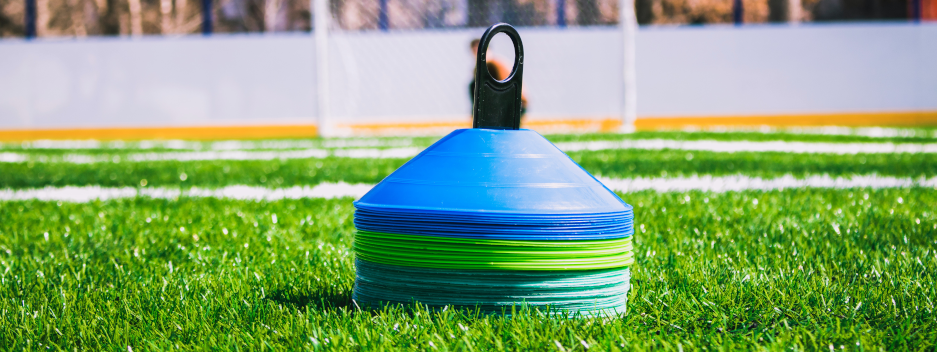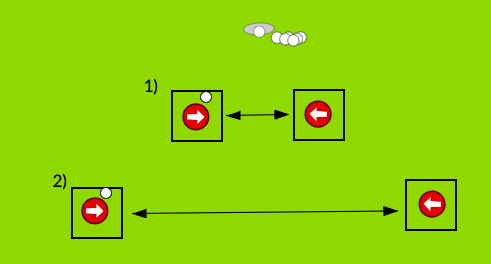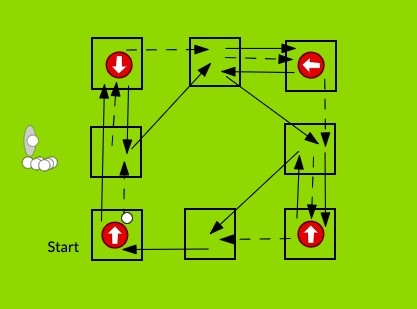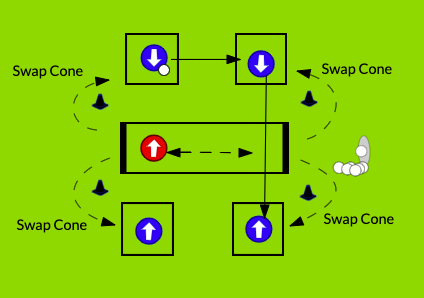Back To Training: Pass & Follow
- May 28th, 2020
- Matt Morrison

We're all raring to get back to it right!? Whether you're Netball or Hockey, a Coach or Player, Amatuer or Elite, we're all looking forward to our first session back. However your next training session is likely to be very different to your last. That's why we've got some tips to help you out.
Follow this back to training blog series as a guide to how you can plan, structure and execute training whilst ensuring the safety of your players and observing social distancing guidelines. This week's focus is on pass and follow drills and how you can implement progressions of this to create a session.
Firstly, it's important to make it clear to the players of the guidelines and what is expected of them and how they can observe them. To ensure players keep their distance and they are able to visualise the distance they are expected to adhere too, set out cones or discs to create an 'individual playing square'. All playing squares should be at least 2 meters apart. Try to get your squares and drills set-up before players arrive so they can get straight into position and ready to play! Every drill should be given clear instruction and demonstration before starting.
Start Simple
It's always nice to ease back into it! Begin with players in pairs, passing the ball to one another from their playing square to get a feel for the ball again. Put rules in place so that passes can only be made with their weaker side or have to be made first time. Really encourage players to think about their technique at this stage.
Progression

Increase the passing distance. Increasing the distance might require a different passing technique. You might need to go from a chest pass to a shoulder pass or a side foot pass to an instep pass. This introduces a new technique and gives you the chance to highlight the coaching points of a different passing technique. Also, how you receive the pass might need to change. Players should be on their toes as they may have to move to get in line with the pass or they might have to take an extra touch.
Start to get players moving by following their pass in an unopposed passing square or formation. Players are not allowed to enter the next square until their teammate has moved out of it. Here's where you can get creative too! Try passing sequences to test your players timing and execution. Add in an extra square where the receiver has to play a 1-2 before moving and the sender then has to lay it into the receivers path. Don't worry if balls are going astray! The coach should keep a constant supply of balls to keep the drills flowing.
Introduce a Defender
Make things interesting and put some extra pressure on the accuracy of those passes! Still maintaining the individual playing squares, introduce a defenders area in the middle so it's now a 4 v 1 or similar. Get the competitive edge of the players going by seeing how many passes then can string together. The attacker who makes the mistake or loses the ball has to switch with the defender in the middle. Use a cone outside of the playing area to ensure players aren't breaking the 2 meter rule when rotating.
Think Tactics
As you get towards the end of the session, you can get players to start thinking about their passing and moving tactically and how this could translate to a match situation. Should the full backs be making an overlapping run, the correct body position for a center midfield in order to receive on the turn or players movement from a centre pass set play.
Set your team up in positions that they would take up in matches and get them executing skills or passes that they will likely be performing in matches. Wide midfielders playing 1-2 passes or crossing first time. Shooters performing short, sharp movements to create space in the circle.
Whilst there are limitations on the types of drills you can include. Now is a great time to take advantage of perfecting technique and grooving skills that players can comfortably utilise in game scenarios. How can you encourage your players to take to this? Look at examples of the Sporting greats from all over the world - Michael Jordan, Cristiano Ronaldo, Roger Federer. Why are they the best? Because they practice, practice, practice to get the basics spot on.